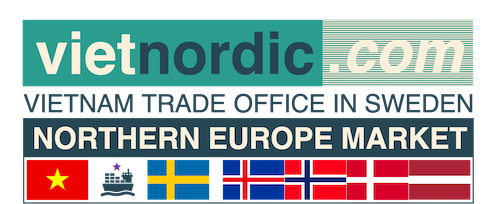Combining Sustainability and Culture to Strengthen Vietnam’s Global Position
Traditional textile weaving using cotton and silk fibers through handicraft techniques provides a strong foundation for Vietnam’s sustainable textile industry.
Northern Europe, comprising Sweden, Denmark, Norway, and Finland, is home to consumers who prioritize environmentally friendly and socially responsible products. Sustainable textiles, made from organic or recycled materials and produced under strict environmental and labor standards, are increasingly dominating this market.
ADVANTAGES IN NATURAL MATERIALS AND TRADITIONAL TECHNIQUES
Ms. Nguyen Thi Hoang Thuy, Vietnam’s Trade Counselor in Sweden and the Nordic countries, emphasizes that entering the sustainable fashion market requires not only high-quality products but also compliance with new sustainability standards, which the EU and Nordic countries are tightening.
This is reinforced by the EU’s new Sustainable and Circular Textile Strategy, announced in March 2022, which aims to reduce the textile industry’s environmental impact, enhance resource efficiency, and encourage circular product usage.
Key objectives of the strategy include:
- Minimizing waste and pollution, including microplastics and hazardous chemicals.
- Increasing the use of sustainable materials such as recycled or organic fibers.
- Promoting circular economy models through production, consumption, recycling, and reuse.
- Establishing strict standards for textile products sold in the EU, requiring durability, recyclability, and eco-friendly production processes.
Vietnam, as one of the world’s leading textile exporters, has an opportunity to tap into this niche market. The EU’s Sustainable Textile Strategy creates significant opportunities, particularly as sustainable fashion consumption trends in Northern Europe continue to grow.
“We have several advantages to leverage, such as an abundant supply of natural materials. Vietnam offers organic resources like organic cotton, bamboo, rattan, and natural silk, all of which are highly favored by Nordic consumers. These materials decompose easily, contain no harmful chemicals, and align with the EU’s environmental protection agenda,” Ms. Thuy pointed out.
Additionally, Vietnam’s traditional handicraft techniques align with sustainability and cultural preservation. Silk weaving, embroidery, and traditional garment production can create unique, sustainable fashion items that are not only eco-friendly but also rich in cultural value, attracting Northern European consumers who seek distinctiveness.
However, the EU’s stringent sustainability standards present a major challenge for Vietnamese textile enterprises. These regulations require not only the use of eco-friendly materials but also the assurance that production processes minimize pollution and maximize recyclability.
Meeting EU standards necessitates investments in cleaner production technologies and effective waste management systems. Additionally, obtaining international certifications such as Global Organic Textile Standard (GOTS) and Fair Trade imposes initial cost burdens.
ADAPTING PRODUCTION MODELS QUICKLY
To penetrate the Northern European sustainable fashion market and benefit from the EU’s textile sustainability strategy, Vietnamese businesses must adapt to regulatory changes and ensure their products meet new standards for durability, recyclability, and environmental friendliness.
Vietnamese enterprises should focus on complying with stringent environmental standards by collaborating with international organizations to obtain sustainability certifications, thereby gaining a competitive edge.
“To meet the EU’s recycling and circular economy requirements, businesses should invest in recycled material production technologies or develop products with high reusability. Optimizing production processes to minimize waste is also crucial,” Ms. Thuy recommended.
Enhancing value through creative design
Vietnamese enterprises should emphasize innovative designs that align with sustainable fashion trends. “Products must not only meet environmental standards but also exhibit aesthetic appeal and modern styles that cater to Northern European consumer preferences,” Ms. Thuy said.
Using Vietnam’s traditional materials such as silk and integrating them with modern designs and advanced techniques can create premium, sustainable fashion items.
Leveraging e-commerce for market access
E-commerce is a vital channel for Vietnamese enterprises to enter the Northern European market. According to Vietnam’s Trade Counselor in Sweden, leveraging online retail platforms such as Zalando, ASOS, and specialized sustainable fashion marketplaces can effectively introduce products to Northern European consumers.
Consumers in Northern Europe are particularly interested in product origins and sustainability narratives. Vietnamese businesses should build brand stories that highlight eco-friendly production processes while incorporating traditional culture and craftsmanship. This approach fosters consumer engagement and strengthens brand recognition.
“To succeed, businesses must swiftly adjust their production models to comply with strict environmental and social standards while maximizing cultural values and creative design. Combining sustainability with cultural heritage will enable Vietnamese enterprises to solidify their position in the global market and capture the promising Northern European fashion industry,” Ms. Thuy concluded.
https://vneconomy.vn/thoi-trang-ben-vung-thi-truong-ngach-tiem-nang-cho-det-may-viet-nam-tai-bac-au.htm

